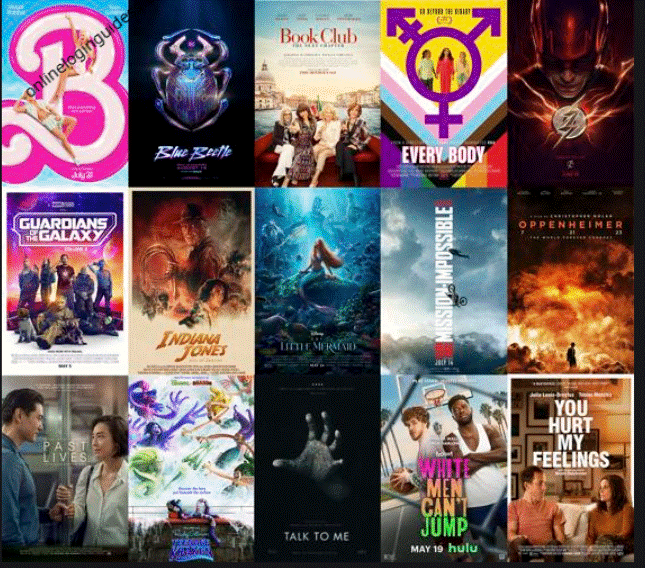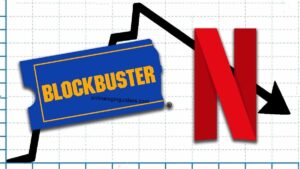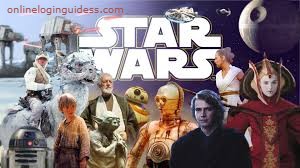The Rise of the Blockbuster Era: Hits That Changed Cinema
Introduction The film industry has undergone dramatic transformations over the past century, with various trends shaping how stories are

Introduction
The film industry has undergone dramatic transformations over the past century, with various trends shaping how stories are told, distributed, and consumed by audiences. One of the most significant shifts came with the rise of the blockbuster—a term that now evokes visions of explosive action, massive budgets, and global appeal. Yet the blockbuster is more than just a financial category; it represents a cultural phenomenon that forever changed the landscape of cinema.
A “blockbuster” originally referred to a type of World War II bomb capable of destroying entire city blocks. Over time, the term was adopted by Hollywood to describe movies that had similar impact at the box office—massive, loud, and impossible to ignore. From the mid-1970s onwards, blockbusters not only began to dominate theaters but also redefined how films were marketed, released, and franchised. This article explores the rise of the blockbuster era, tracing its roots, its evolution, and its lasting impact on the film industry.

Early Foundations of the Blockbuster
Before the modern blockbuster emerged, certain films in earlier decades had already laid the groundwork for large-scale cinema. In the 1930s and 1940s, Hollywood began experimenting with epic storytelling, lavish production designs, and longer run-times. Films like Gone with the Wind (1939) and Ben-Hur (1959) were massive productions that captivated audiences worldwide. These movies featured large casts, exotic locations, and dramatic narratives that pushed the limits of cinema at the time.
While these films were commercial and critical successes, they lacked the marketing machinery and widespread simultaneous releases that define modern blockbusters. Nevertheless, they proved that spectacle could drive huge box office returns, setting the stage for a new era in film history.
The Birth of the Modern Blockbuster: Jaws (1975)
The true beginning of the blockbuster era can be traced to the release of Jaws in 1975. Directed by a young Steven Spielberg, Jaws was based on the novel by Peter Benchley and told the terrifying story of a man-eating shark terrorizing a beach town. While the premise seemed simple, the execution was groundbreaking.
What made Jaws revolutionary wasn’t just the suspenseful storytelling or the clever use of a mechanical shark (which rarely worked and forced Spielberg to rely more on suggestion and tension). It was the film’s release strategy. For the first time, a studio released a film simultaneously in hundreds of theaters across the United States, backed by a massive television marketing campaign. Prior to this, films typically opened in a few cities and expanded gradually based on success.
The gamble paid off. Jaws became a massive hit, earning over $470 million worldwide and becoming the highest-grossing film of its time. It introduced the idea of the “summer blockbuster”—a big-budget, highly marketed film designed to dominate the summer box office. From this point onward, Hollywood realized the immense financial potential of this model.
Star Wars and the Birth of Franchise Filmmaking
If Jaws was the prototype, Star Wars (1977) perfected the formula. Directed by George Lucas, Star Wars wasn’t just a film—it was a cultural event. Combining elements of science fiction, mythology, and fantasy, Star Wars introduced audiences to a galaxy far, far away, with unforgettable characters, visual effects, and a musical score that became instantly iconic.
More importantly, Star Wars ushered in the era of merchandise-driven filmmaking. Toys, clothing, lunchboxes, and books flooded the market, creating a secondary revenue stream that rivaled the movie’s box office earnings. Hollywood took notice. Films were no longer just about ticket sales—they were platforms for expansive merchandising empires.
Additionally, Star Wars initiated the trend of sequels and trilogies, which became staples of blockbuster filmmaking. Studios began investing in franchises that could produce multiple films over several years, ensuring a steady stream of income and a loyal fan base.
The 1980s: A Golden Age of Blockbusters
The 1980s marked a creative explosion in the blockbuster world. Filmmakers like Steven Spielberg, George Lucas, James Cameron, and Ridley Scott delivered hit after hit, pushing the boundaries of technology and storytelling.
Some of the most iconic blockbusters of the 1980s included:
Raiders of the Lost Ark (1981) – Blending adventure, history, and action, this film introduced Indiana Jones and became a cultural icon.
E.T. the Extra-Terrestrial (1982) – A heartfelt science fiction story that captivated audiences with its emotional depth and groundbreaking effects.
Ghostbusters (1984) – Mixing comedy and the supernatural, this film became a surprise hit and launched a multimedia franchise.
Top Gun (1986) – A high-octane action film that combined patriotism, adrenaline, and a hit soundtrack.
These films demonstrated that blockbusters didn’t need to be confined to one genre. Whether science fiction, fantasy, action, or even comedy, any film could become a blockbuster with the right ingredients—big stars, memorable moments, and wide audience appeal.
The 1990s: The Digital Revolution and Bigger Stakes
By the 1990s, advances in computer-generated imagery (CGI) transformed the scope and scale of what could be shown on screen. One of the most influential films of this era was Jurassic Park (1993), directed again by Spielberg. With lifelike dinosaurs brought to life through cutting-edge technology, Jurassic Park stunned audiences and redefined visual effects standards in Hollywood.
Another milestone was Titanic (1997), directed by James Cameron. With a budget that ballooned over $200 million—a staggering amount at the time—many predicted it would flop. Instead, it became a massive critical and commercial success, eventually becoming the highest-grossing film of all time (until Avatar, also by Cameron, surpassed it in 2009).
The 1990s also saw the rise of animated blockbusters, particularly from Disney. Films like The Lion King, Beauty and the Beast, and Aladdin proved that animated films could dominate the box office and win over critics and families alike.
The 2000s and Beyond: Franchise Domination
The new millennium brought about a new phase in blockbuster filmmaking—one dominated almost entirely by franchises and shared universes.
The Harry Potter series kicked off in 2001 and ran for a decade, generating billions in revenue and ushering in a new model: adapting popular book series into blockbuster films. Around the same time, The Lord of the Rings trilogy proved that fantasy could be taken seriously and turned into Oscar-winning, billion-dollar blockbusters.
But the biggest change came with the launch of the Marvel Cinematic Universe (MCU). Starting with Iron Man in 2008, Marvel Studios introduced a shared universe where characters and storylines crossed between films. This interconnected approach allowed Marvel to build momentum with each new release, culminating in massive crossover events like Avengers: Endgame (2019), which broke numerous box office records and became one of the highest-grossing films of all time.
Other franchises followed suit, including The Hunger Games, Twilight, Fast & Furious, and rebooted versions of Star Wars and Jurassic Park. The formula was clear: create a cinematic universe, cast popular actors, and plan sequels years in advance.
Blockbuster Criticism and Changing Tastes
Despite their popularity, blockbusters have not been immune to criticism. Many filmmakers and critics argue that the dominance of big-budget, franchise-driven films has stifled creativity in Hollywood. Independent films, mid-budget dramas, and original stories often struggle to find theatrical distribution, as studios prioritize guaranteed money-makers.
Moreover, audiences have started to show signs of fatigue. While superhero films and reboots continue to earn money, some recent installments have underperformed at the box office, leading analysts to wonder whether the blockbuster era might be evolving once again.
Streaming platforms like Netflix, Amazon Prime, and Disney+ have also disrupted the traditional theatrical model. Now, many high-budget films debut directly on streaming services, making it harder to define what counts as a “blockbuster” in the modern age.
Global Influence and International Markets
One of the most significant changes in recent years is the growing importance of international audiences. Blockbusters are no longer made just for American viewers—they’re designed to appeal globally. This has led to more diverse casting, more universal storylines, and sometimes the inclusion of actors popular in specific regions to boost overseas interest.
China, in particular, has become a vital market for blockbuster films. Studios now tailor releases and marketing efforts to succeed in the Chinese box office, which can sometimes make or break a film’s financial performance.
Conclusion
The blockbuster is more than just a category of film—it’s a storytelling engine, a marketing machine, and a global business strategy. From the shark-infested waters of Jaws to the galaxy-spanning epics of Star Wars and the superhuman battles of the Marvel Cinematic Universe, blockbusters have defined generations of moviegoers.
They have pushed the boundaries of technology, influenced global culture, and reshaped how films are made and consumed. While they are not without criticism, their impact on cinema is undeniable. As the industry continues to evolve with streaming, artificial intelligence, and new storytelling formats, one thing remains clear: the blockbuster, in












